
Arata Isozaki
Arata Isozaki is the chairman of a renowned contemporary architect and a leading figure in post-modem architecture in Japan. Born in 1931 in Oita City, Japan, he graduated from the Department of Architecture in the Faculty of Engineering at the University of Tokyo in 1954, and completed his doctoral study at the University of Tokyo in the Department of Architecture in 1961. He was once the pupil of Kenzō Tange, and in 1963 he established Arata Isozaki & Associates. He and two other architects, Kisho Kurokawa and Tadao Ando, are the three great architects of Japan.
Arata Isozaki's works are mostly large-scale public buildings that accentuate the rather liberal style of his designs, and he is famous for his creativity and courage. His concepts are new; nonetheless they are not without the kind of self-resatraint and reservedness that is typical of the eastern spirit. He has exerted undeniable influence on the Japanese, Asian, and even the world’s architecture. City In the Air, Nara Centennial Hall, the Kyoto Concert Hall, Shanghai Himalayas Museum, and the Art Museum of China Central Academy of Fine Arts are the best and the most representative of his works, among others. He imbues his works with his thoughts about architecture and philosophy. His philosophies include the idea of ruins, the unbuilt, and the history of the unbuilt.
The theory of ruins and the unbuilt is closely related to the formative years of Arata Isozaki. As early as in the year of 1964, Mr. Isozaki, who had been traveling around the world taking aerial photographs in small aircrafts, discovered by surprise that the architectural ruins of the ancient Greece and the fuzzy outlines of the behemoth that was the city of Los Angeles were very much reminiscent of the ruins of Hiroshima after the atomic bomb. This inadvertent discovery brought back his horrific memories of what he had personally witnessed at the age of 14, of the city of Hiroshima turning into complete ruins in the blink of an eye. In the 14th Milan Triennale Exhibition in 1968, then 37 year old Mr. Isozaki exhibited his large-scale installation work Electric Labyrinth, where he tried to combine the Japanese hell paintings with ukiyoe of the Bakumatsu Period, in an effort to recreate the scene packed with corpses in the aftermath of the atomic bomb, ushering the audience into the world of sorrows and wretchedness. On the other side of the show board, Arata Isozaki created in this work of collage a city of future that was already in ruins. It was an abstract piece of work, but nonetheless people still got the idea, the idea of construction and deconstruction, the conception and the end. Since this piece of work, Isozaki has turned ruins into a concept, and elevated it to the level of aesthetics and philosophy: All the rationality of our human beings that goes into conception and planning will be utterly overwhelmed and overthrown in the waves of irrational impulses that are deeply embedded in our nature. In his opinion, all the constructions of more than a thousand years old and the cities that have been ravaged by war have long turned into ruins. Buildings that will come in the future will again be turned into ruins when their time comes. Therefore, real architecture only exists on papers. And because it is never built, it will never be ruined, and will stay in the history of architecture forever. Because of this theory of ruins, Arata Isozaki no longer cares that much about whether the buildings have actually been built or not. He began to redefine architecture within the theoretical framework of the theory of the unbuilt, and came up with a series of designs that could not hope to work in the real world, in an effort to address the social problems at the time that could not and should not be ignored. This series of designs has been given the name of the Unbuilt in the history of contemporary architecture.
The City In the Air designed in 1969 was done as a reflection of Japan at that time, which was under the siege of the population explosion as well as the scarcity of the land. It consisted of tree-shaped units, reminding people of the kind of boredom brought about by the repetitiveness of rows and rows of skyscrapers. This design, which didn’t have the remotest chance of being implemented, became one of the representative works in his early years. Through the City In the Air in the 60s, the Cyber City in the 70s, the Interior City int he 80s, and the Mirage City in the 90s, Arata Isozaki captured the essence of the modernisation and globalisation as well as the heat of the internet that was happening both inside and outside Japan. He is always in the forefront of his time, by offering the world series of conceptions that are oftentimes seen by his contemporaries as useless fantasies. His contributions to the world often come in the form of ideas rather than finished projects, but great academic achievements all the same, which no books on architecture history could shrug off. As time passes, people often come to realise that he is actually a clairvoyant and a master storyteller who speaks in parables. Many of his thoughts are still futurist even by today’s standards.
From the History of Architecture to the History of the Unbuilt
According to Arata Isozaki, the history of unbuilt architecture is the truly authentic history of architecture. Those that are unbuilt are in effect timeless, which will be perpetually preserved in the realm of thoughts, forming a history of architecture in which the timeline is irrelevant, giving the readers an idea about the correlation between architecture and the society, and also serves as a reflection of the architecture in the real world. In the age of media, the concept of time and space is rendered null and void, while only the concept of field might still mean something. Since on the internet everything happens synchronously, the time difference is pretty much non-existent, and the space doesn’t exist at all. The Unbuilt by Arata Isozaki was a direct response to this phenomenon, which was too much ahead of its time, and therefore doomed to be unbuilt. It was exactly because of the rapid development of media in this century in terms of its influence that the tradition of the unbuilt started ever since the time of Piranesi and Alberti has been on the surge, demanding a place in the history of architecture. Therefore, the Unbuilt by Arata Isozaki has become a part of the history where time is not important. This history of architecture that also takes in the unbuilt is entirely different from the previous histories of architecture. In the future, when most of the existing constructions will not exist anymore, how will the historians of architecture look back on where we are today? Apart from only a handful of constructions that might be preserved, the future historians will base their study mostly on information stored in the media. When the constructions disappear, the difference between the built and the unbuilt might not be so great. People in the future may be able to find precursors of the future architecture from the unbuilt of Arata Isozaki.
From the Unbuilt to the Built
Ever since the founding of the Arata Isozaki & Associates, the built and the unbuilt are the two extremes of his practice. The theory of the unbuilt has been a recurring theme in his works, and the projects that have been built are the expression of his philosophies as well as emotions about architecture, in which he successfully makes the advanced ideas work in the practice of architecture. His contributions are not limited to the Unbuilt that have played a part in the history of architecture. As a internationally acclaimed artist, it is not just the conceptual work that has earned him the worldwide reputation; this architect, who has been in this profession for nearly 50 years, has also spearheaded the design and construction of many a building that should go into history books. Equipped with his thinking on the unbuilt, his works include art museums, galleries, opera houses, observatories, office buildings and residential compounds. The especially noteworthy are the Tsukuba City Centre, Nara Centennial Hall, the Art Museum of China Central Academy of Fine Arts, the Kyoto Concert Hall, Casa del hombre (DOMUS) the House of Man, COSI Columbus, the New exit for the Uffizi Gallery, Gunma Astronomical Observatory, and the International Architectural Competition of the National Grand Theater of China. His success overseas is a natural outcome of globalization. The predictions he made earlier have finally come true in various places. And the unbuilt are still on the anxious waiting list to be built.
Compared with the Kunio Maekawa who believes that embellishment is a sin and Kengo Kuma who claims that we should make architecture disappear, Arata Isozaki seems to be more inclusive and tolerant. It is exactly because of this tolerance, as well as his unique style, that has helped him transcend beyond the time. From the models that are unbuilt to the projects that have been built, all his thinking and his responses to the problems in urban development have all exhibited creativity and foresight. No matter it is about preservation, or about the design of a project, Arata Isozaki always puts the user experience and the functions of the constructions first on the priority list. He reinvents and adapts a variety of forms, looking for ways to make it work on all levels. And these adaptions have not only inspired new scholars in architecture, but also promoted the architectural theories and its practice. There is great value in studying them.
Notable Works:
ōita Prefectural Library
Kitakyushu Municipal Museum of Art
KitaKyushu central library
The Museum of Modern Art, Gunma
OKANOYAMA MUSEUM OF ART, NISHIWAKI
Tsukuba City Centre
Museum of Contemporary Art (MOCA), Los Angeles
Art Tower Mito
EXPO ’70 Osaka, Festival Plaza
Sports Hall for the 1992 Summer Olympics, Barcelona
Center for Advanced Science and Technology, HYOGO
Casa del hombre (DOMUS) the House of Man
the Kyoto Concert Hall
Nara Centennial Hall
Shanghai Himalayas Museum
Shenzhen Cultural Center
Museum of the Central Academy of Fine Arts
Datong Concert Hall
Hunan Provincial Museum
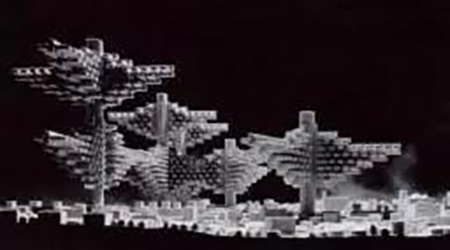
City in the Air,1969
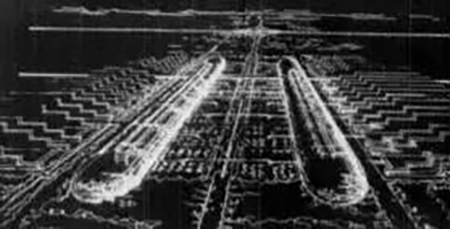
Cyber City,1970
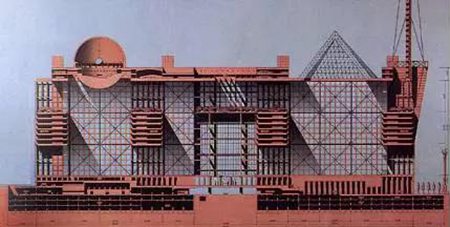
New Tokyo City Hall Competition, Tokyo, 1985-1986

Nara Centennial Hall
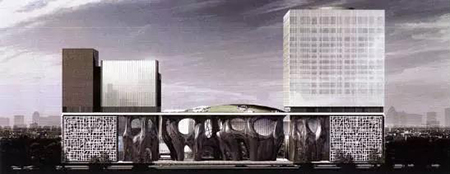
Shanghai Himalayas Museum
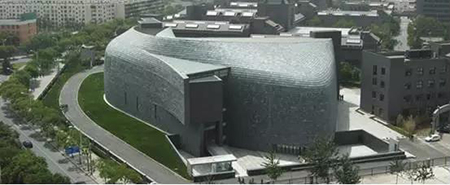
Museum of the Central Academy of Fine Arts
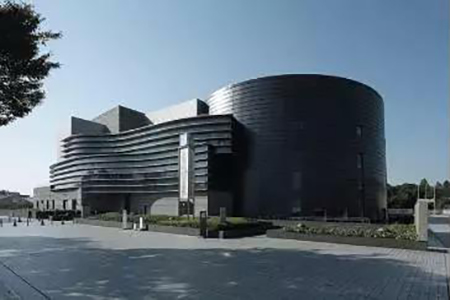
Kyoto Concert Hall

Hunan Provincial Museum
Compared with the Kunio Maekawa who believes that embellishment is a sin and Kengo Kuma who claims that we should make architecture disappear, Arata Isozaki seems to be more inclusive and tolerant. It is exactly because of this tolerance, as well as his unique style, that has helped him transcend beyond the time. From the models that are unbuilt to the projects that have been built, all his thinking and his responses to the problems in urban development have all exhibited creativity and foresight. No matter it is about preservation, or about the design of a project, Arata Isozaki always puts the user experience and the functions of the constructions first on the priority list. He reinvents and adapts a variety of forms, looking for ways to make it work on all levels. And these adaptions have not only inspired new scholars in architecture, but also promoted the architectural theories and its practice. There is great value in studying them.
Notable Works:
ōita Prefectural Library
Kitakyushu Municipal Museum of Art
KitaKyushu central library
The Museum of Modern Art, Gunma
OKANOYAMA MUSEUM OF ART, NISHIWAKI
Tsukuba City Centre
Museum of Contemporary Art (MOCA), Los Angeles
Art Tower Mito
EXPO ’70 Osaka, Festival Plaza
Sports Hall for the 1992 Summer Olympics, Barcelona
Center for Advanced Science and Technology, HYOGO
Casa del hombre (DOMUS) the House of Man
the Kyoto Concert Hall
Nara Centennial Hall
Shanghai Himalayas Museum
Shenzhen Cultural Center
Museum of the Central Academy of Fine Arts
Datong Concert Hall
Hunan Provincial Museum
Flat D, 13 Floor , Sing Teck Factory Building, 44 Wong Chuk Hang Road, Hong Kong
00852 27965068
00852 27965068
info@icaalliance.org